Marketing has developed impressively through time, from printing banners and basic ads to advanced techniques through the digital world. It is necessary to attract customers in order to increase sales. But it doesn’t end there. At present, the advertiser depends heavily on data analytics and personalization techniques.
Marketing to retain customers is always cheaper than to search for a new one. The key to repeat customers is by discovering approaches in making products and services highly attractive and meeting customer expectations repeatedly. Personalized marketing plays an important role in increasing customer’s lifetime value (LTV). Let us see how personalized marketing can be helpful.
Bonus Read – 8 Must Knows And Takeaways For Highly Personalized E-Commerce Marketing Campaigns
Why personalized marketing is important?
Before proceeding further, it is important for us to know why we deal with personalized marketing or why it is important. At present when the world has gone digital, marketers crave for more sales and look out for ideas on how they can reach more customers, increase traffic and generate revenue.
Most of the customers consider buying a product within a specific period of time. So in order to re-engage the customers, it is necessary to keep marketing mode activated. The real sales journey starts after the first purchase is successful. Personalization is one of the important factors to create healthy communication and loyal relationship with customers, leading to high lifetime value.
When I first came across personalization back in 2015, I struggled to understand the kind of work required in making a personalized marketing strategy. However, Marketing Automation helped me in managing the process and making it simpler.
Keep your eyes open, as I am going to introduce different ways to set up a personalized customer experience in no time.
Things to consider while personalizing marketing:
Before I go into personalized marketing automation, I’d like to add few key points of consideration you’d need to take:
- Why personalized marketing is important?
- Personalization ladder
- Data – The backbone of Hyper-personalization
- Segments of the customer base
- The negative lot
- Personalized home page
- Personalized ads
- Personalized email campaigns
- Personalized upsell and cross-sell
- Personalizing customer journey
- Personalized chat
- Location-based social proofing
1. Personalization ladder
When we talk about personalization, we see 3 stages which every organization has to pass through, starting the process with personalization and end with hyper personalization. As per a study from salecycle, personalized emails see 56% increase in sales.
The stages are as follows:
- Generic Personalization — When personalization is for services and / or niche specific, it refers to fully generic personalization. This process is no longer acceptable these days. It’s more like mass blast.
- Mass Personalization — It is generally when larger segments are created based on customer’s personal data to improve their experiences. i.e. by classifying a group of users based on their traits (location/age group) and then providing them with personalized experience. It is not for a particular individual, it is specific to a group of people falling under a specified attribute.Mass personalization helps us customize offers that are based on similar past purchases, interests, demographic profile, and location.
- Hyper Personalization — Connection of users browsing / purchasing data with mass personalization technique generates Hyper-Personalization. Taking note of every activity on a website is a part of hyper personalization. Marketers these days are armed with automation tools for hyper personalization. E-Commerce is full of such examples. E-Commerce marketplaces like Amazon & Walmart clearly have championed the personalization game.
The outcome becomes more effective as you climb these stages. Hyper-personalization is tricky but luckily we have tools available in the market to tackle it.
But wait, did I mention that half of the businesses doing personalization actually stop at basic personalization technique? If you can increase the relevance of suggestion with hyper-personalization, it can easily increase your customer engagement and skyrocket your sales in no time.
I’ll talk about this below.
2. Data – The backbone of Hyper-personalization
Let’s say you’re hanging around your local mall. You visit your favorite store and the store owner shows you the exact dress you were looking for. That’s a moment of pure delight for you as a customer. Data does exactly the same thing when it comes to hyper-personalization.
Visitors get irritated when the content isn’t relevant to them. Particularly in the ecommerce niche where multiple products are being displayed. So, with hyper-personalization, you focus on customer’s behavior, activity and persona.
Then it becomes more precise in delivering your customer’s demand. For this, you will need a system that produces all the required data for action. WebEngage is one of the best options to accomplish this task.
3. Segments of the customer base
Always remember, 1-1 personalization makes the job difficult. It is better to segment customers based on their needs to deliver services that fit their profile the best. So, the data team needs to identify the segment of clients based on their interest, geography or other relevant factors, making them different from each other.
Specific campaigns based on specific interest groups will positively yield better results.
4. The negative lot
Every angry, upset or disinterested client is a signal. So every time a client strays from the intended course of action, it provides an opportunity for you as a marketer to learn. Learning from that opportunity should help the algorithm perform better next time.
Now let us look at the 7 real personalization techniques that can be helpful in generating leads/sales.
1. Personalized home page
Your home page is the face of your brand, and it is the first thing that your customer sees when they visit your website. It is very important to treat your homepage as a conversion magnet.
One of the most effective ways to do this is by personalizing your web page for every visitor, mainly for new vs returning visits. It isn’t as difficult as it sounds. According to a case study published last year by Moz on homepage A/B testing for new and returned visitors, they witnessed:
- 1.5% increase in engagement.
- 113% increase in conversions to Solutions page.
- 117% increase in conversions on “Test it Out” CTA to start account creation process.
Managing an e-commerce site is no different. Consider Amazon, which has been using personalized homepages since a long time (long before entrepreneurs came up with AI-based startups). Whenever an existing customer visits the Amazon site, the homepage shows the result based on the customer’s purchase and search history.
See below:

Major elements to consider while dealing with homepage personalization is,
- Different homepage experience for new and old visitors.
- Personalization based on their browsing history.
- Personalization based on their purchase history.
This needs extensive A/B testing. For that, many organizations use tools to conduct A/B testing on the live environment. Optimizely is one of the leading provider of such a tool.
2. Personalized ads
Hyper-personalized ads are one of the key elements for advertisers to keep their ROI and LTV higher than before.
I already spoke about the importance of data under the “things to consider” section above. Facebook and Google ads are more friendly towards remarketing data. Google’s remarketing tag and Facebook pixel help you to target your ads based on the customer’s activity.
You can easily automate this process with the help of dynamic ads from Facebook and Google. Steps are pretty simple and straight for both:
- Get your product feed ready
- Set-up your remarketing tag and Pixel for facebook
- Create dynamic ads
This is similar for both, Facebook and Google ads. So let us quickly see how you can create personalized ads in Facebook.
1. Get your product feed ready
The product feed is a base for your dynamic remarketing ads. If you’re using any popular Content Management System (CMS) for your store, you can easily create and download your feed. If you have a custom store, you need to use 3rd party tools like godatafeed.com and create your feed.
Once you have your product feed ready, go to the catalog manager in the Facebook business manager asset section, and upload your feed.

Your product feed is ready.
2. Set-up your Facebook pixel
Facebook pixel is simple! Just add your pixel code to every page of your website and conversion pixel to your order confirmation page.
- Creating Facebook pixel is easy – open Facebook Ads manager and select pixels option.
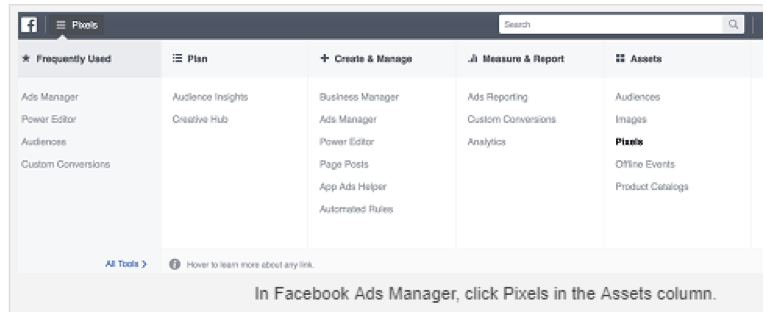
- You will be directed to a page where you can create a Pixel. lick on the create a pixel button.
![]()
- Add a name to your pixel and click next.
![]()
- You can copy and paste the pixel code manually and paste it in the header tag of your website.
![]()
Facebook pixel helps you to get to know about the people engaging with your content. It is one of the most powerful tools out there to engage with your customers and to find new leads.
3. Create dynamic ads
You can easily create dynamic ads to show your products catalogue in a personalized manner. We are already done with creating the catalogue and have the pixel ready on the product pages.
Now, all you have to do is create dynamic ads using catalogue sales objective.
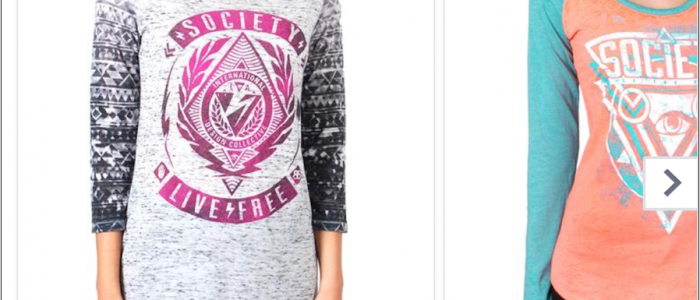
3. Personalized email campaigns
Yes, providing hyper-personalized experience with email marketing is also possible. Personalized email is very effective and can help in driving conversion rates higher.
Email targeting triggers generally include:
- Segment based trigger.
- Time based trigger.
- Ultra-personalized trigger.
Most of the marketers go with basic email personalization which generally includes a subject line with a subscriber’s name, content of the email based on customer interest and gender, their location or other possibilities. According to Campaign Monitor, emails with personalized subject lines are 26% more likely to be opened than those without.
We can make a personalized email campaign more effective with:
- Email campaigns based on users past activity.
- Product recommendations based on past purchase and browsing activity.
- Abandoned cart email notification.
- Email notification for browsing a particular category.
How you can set personalized triggers?
Personalized triggers can help you with sending the right message to the right people at the right time.. With the help of email personalization, you will be able to send communication emails based on custom requirements.
Once you start this campaign, it will help your business to engage more with customers based on their activity and behavior. Let us see how you can implement deeper personalization and customize your emails. Here are top 3 factors based on which you can personalize your emails:
1) Email based on a customer’s activity:
- Welcome email: which is like an opportunity of building a relationship with your customers. On signing up for your services or application, triggering a welcome email and introduction to services with first time offer will attract customers to explore more.
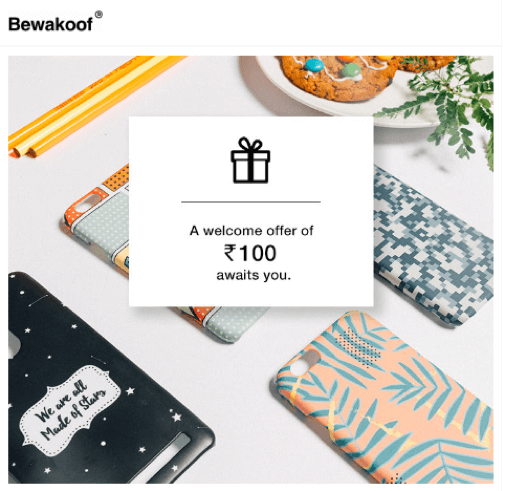
- Reactivation email: Sending an email to customers after a particular time span of inactivity will help your customers to reconsider on engaging themselves with your services. Targeting customers based on their inactivity with new offers and feedback form will be more profitable to your business.
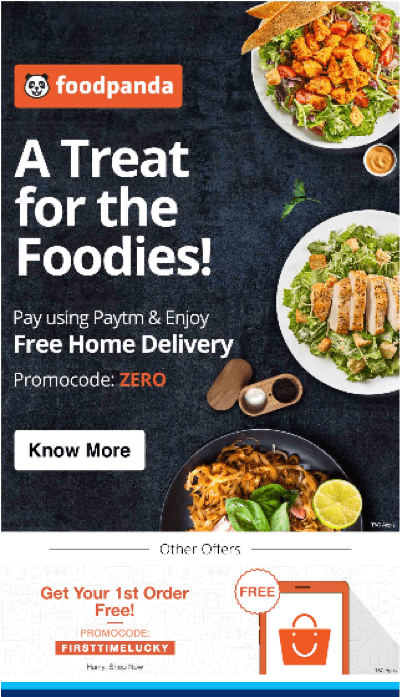
- Periodic sales email: You can send an email reminding your buyers o buy a particular product in a span of time. . For eg, When a customer buys a phone from your store, you can offer them headphones or related products on special price within a gap of few months.
- Cart abandonment mail: Triggering an email to your customers who left their cart without making any purchase will make them think again on their purchase. You can offer free shipping or a promo code to buyers who keep the products in their cart ready but don’t order. This email can be sent as a reminder to make the purchase or the products moving out faster.

- Mail based on browsing behavior: Keeping a check on buyers browsing activity will keep you updated with their preferences. On sending emails based on your customer’s past purchase or browsing history with special discount will help you build a loyal relationship with customers.
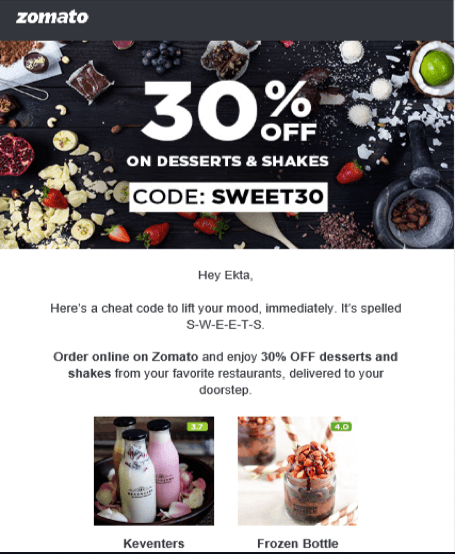
2) Email based on customer’s profile
Gender-based email segmentation: This is the most basic segmentation when it comes to triggering emails. Men and women often respond differently to a few products. You can segment products based on preferred choices by men and women, which will help you trigger emails in a much easier way.
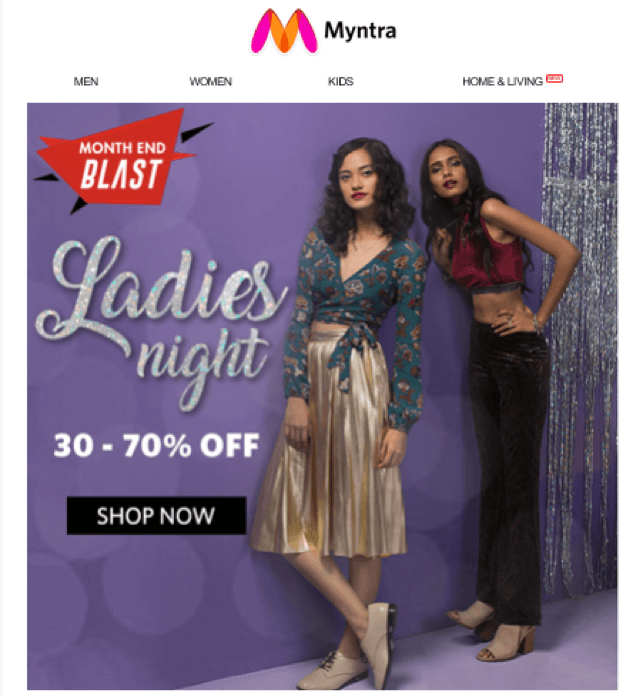
Location-based email campaign: you can inform your customers about a sale at their nearest location, providing them with discount coupons or event tickets at a special rate.
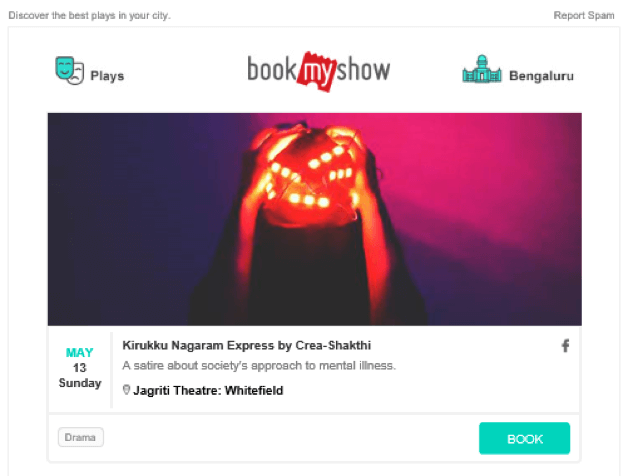
Build customer relation by sending Bday/Anniversary/festive wishes.
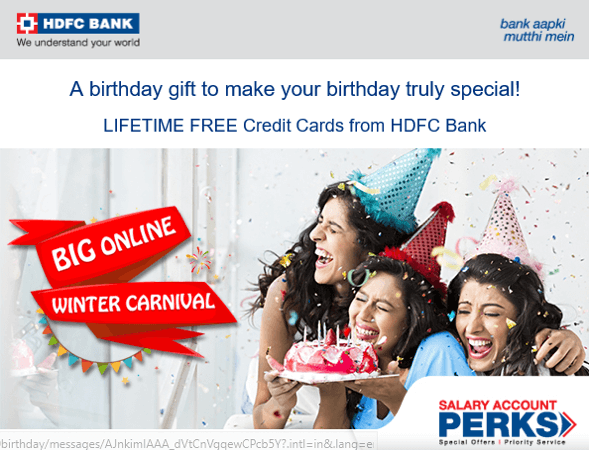
4. Personalized upsell and cross-sell
Upselling is a way to encourage customers to purchase a high-end product based on their past purchase whereas cross-sell is inviting customers to buy related or complementary products.
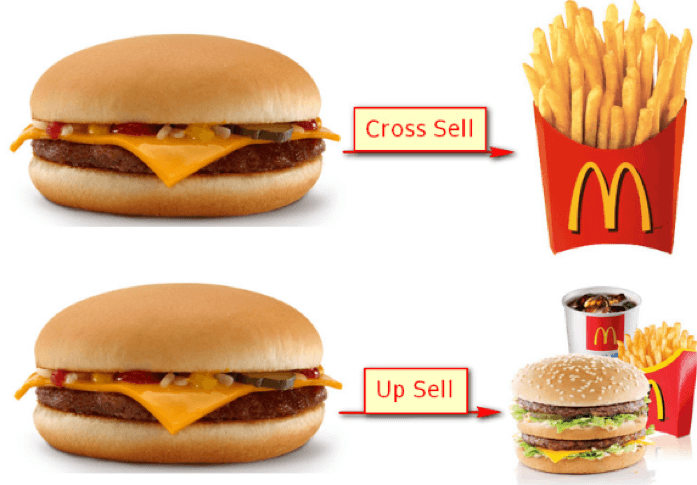
Personalizing upselling & cross-selling can sometimes be effective and increase sales by more than 30%. This can be done through the following:
- By introducing a section of “You may also like” in cart will help in driving 10% more sales.
- Stores use cross-sell option for customers on the checkout page encouraging them to buy add-on products.
- An additional section of “People also bought together” is another way of cross-selling. For e.g. stores can provide additional add-on product as a phone case with a mobile purchase.
- An option of providing extended warranty is a great way to generate traffic while cross-selling.
5. Personalizing customer journey
Customer journey personalization starts from the moment a person visits the website. Once the person signs up, it is very important for businesses to deal with the signed up user in a flow.
EasyEcom, have been applying a three-step process for designing a personalized journey:
1. Segment:
Segmentation is required to differentiate between customers signed up on the website. Using a Customer Relationship Management (CRM) tool will help you segment visitors based on their scores from source and activity.
Funnel visitors based on their activity with cold, warm and hot leads to make the task easier. Cold being the least interested leads, warm being moderately interested or in need of partial service and hot being the ready to opt for the services.
2. Connect:
Using different workflows for different segments help businesses to connect better with customers operationally. Workflows can contain complex engagement processes that are multi-layered, and highly customized for specific segments.
To connect better with the segmented leads you can:
- Send personalized onboarding emails to hot leads.
- Send nurture emails to warm and cold leads with a different flow.
- Remarket nurture ads to warm and cold leads.
- Push customers to go to the next funnel.
3. Close:
To proceed further with closing the hot leads, it is necessary to handle it with more ease to work on successful conversion.
The process of closing is based on scores and activity. Customers with highest scores will be considered as hot leads where the sales team helps further in making successful conversions. By tracking visitor’s activity, personalized offers can be forwarded to warm leads in order to push them to next funnel.
6. Personalized chat
When customers visit a website, they get a lot of information from the site. For some it might be a good option, but there are customers who suffer from an information overload. Ever thought about making their browsing experience easier? Personalized chat is something which can be a helpful option.
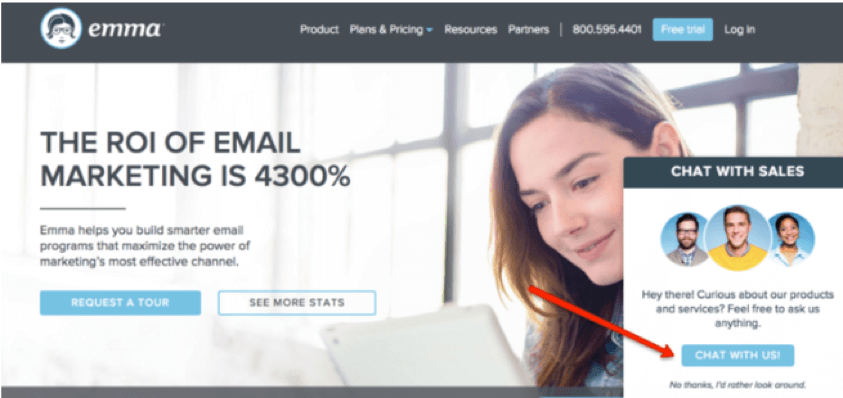
Offering personalized messages for first time visitors, return visitors, logged in visitor based on their actions will result in more engaging customers.
A South Korean car company, Kia had launched Kian, a chatbot in November 2017.
According to Digiday with 600,000 message being exchanged at Kian, in four months since the launch has seen 3 times more conversion rate.
Since Kian clients are making inquiries directly to chatbots, the organization can rapidly determine what they’re contemplating by monitoring the clicks on different parts of the site. This allowed Kia to answer their customers in real time 24/7 and helped them to save up their expenses on setting up call centers and customer support services.

7. Location-based social proofing
Social proofing is a technique that people use to convince other people around them or is based on the idea of social influence.
How social proof can be used in shopping carts?
Customers get attracted to a particular product by viewing others who relay their personal experience through reviews/comments for the specific product.
Brands include a section in their ecommerce platform and win their customers trust by showing what number/percentage of people bought a particular product or what percentage of sales under the running deal is a success.
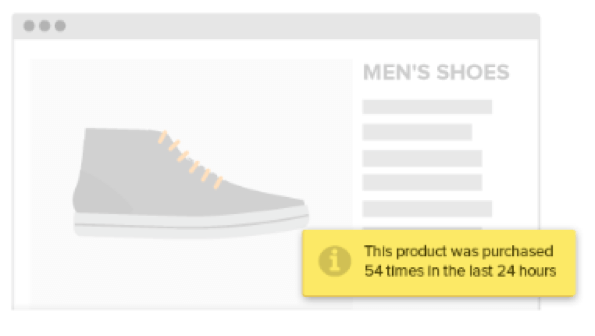
Location-based social proofing on cart
Applying a sales pop-up will display the activities by customers purchasing product from different locations. This will be shown as a proof that there are existing customers buying the product.

Conclusion
Hype-Personalization has seen wide adoption as a marketing tactic, with 92% of marketers reporting usage in some way. Email being the most common channel for personalization, three out of four marketers (77%) are applying personalization to emails – and one out of two are personalizing their websites (52%). Less than a third are utilizing it with a mobile app (31%) or web application (24%).
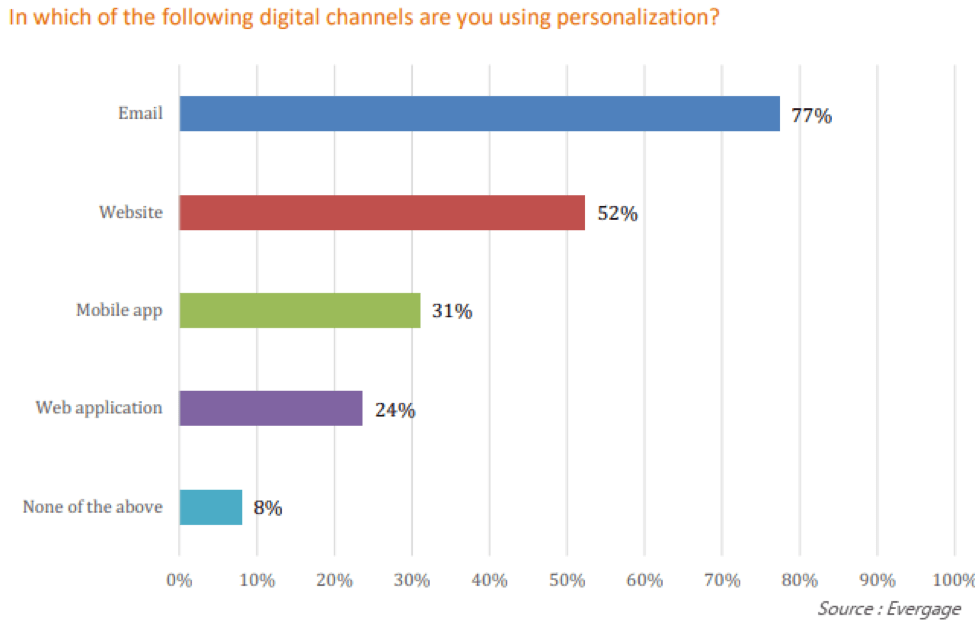
The primary thing to consider is, using the right tool for effective personalization. So picking up a tool that gives freedom in doing what marketers need will be helpful in the long run.
Download Impact Story – How Goibibo, A large OTA company in India, uses Hyper-Personalization in Emails to increase conversions by 11%


































 Vanhishikha Bhargava
Vanhishikha Bhargava
 Prakhya Nair
Prakhya Nair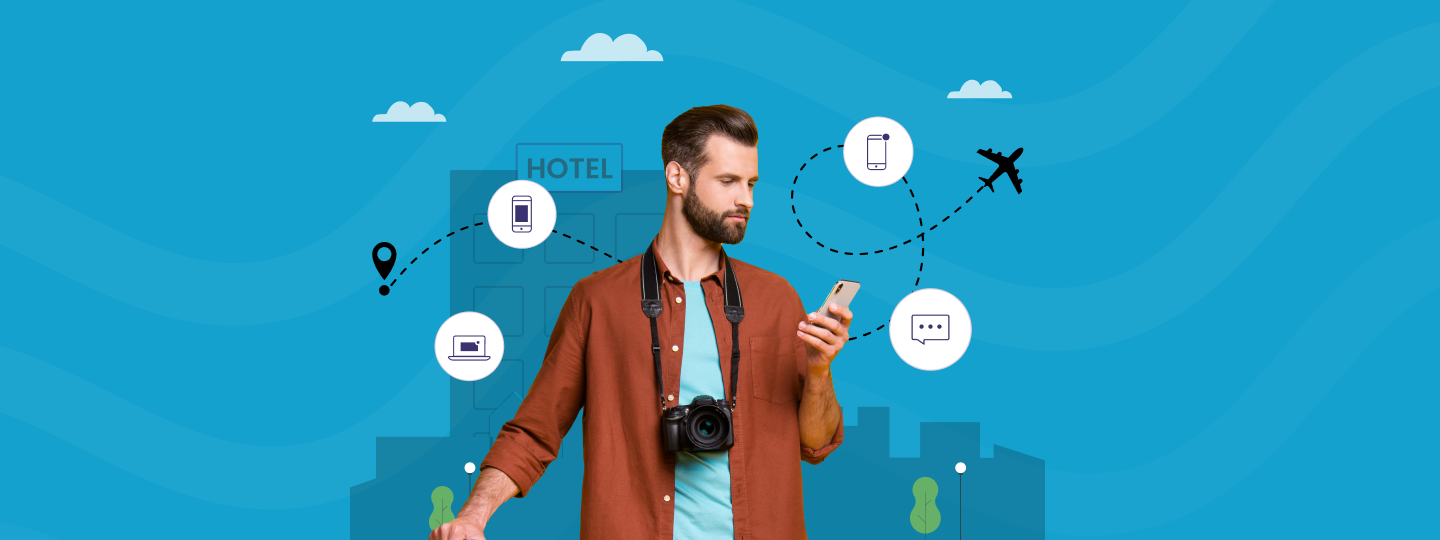
 Inioluwa Ademuwagun
Inioluwa Ademuwagun



